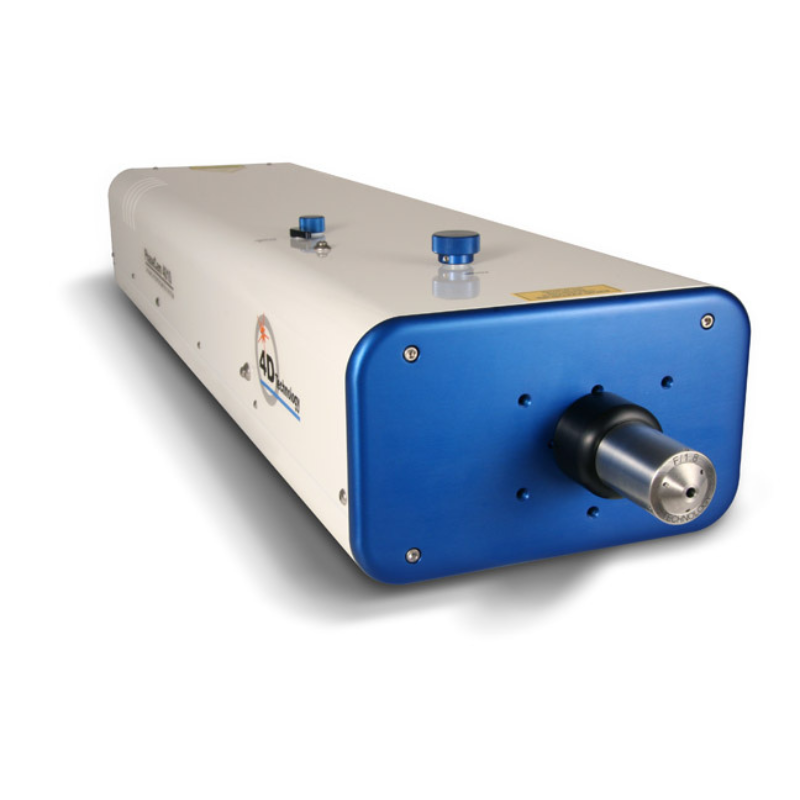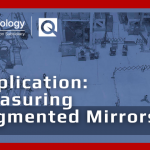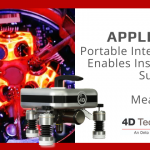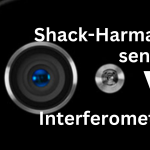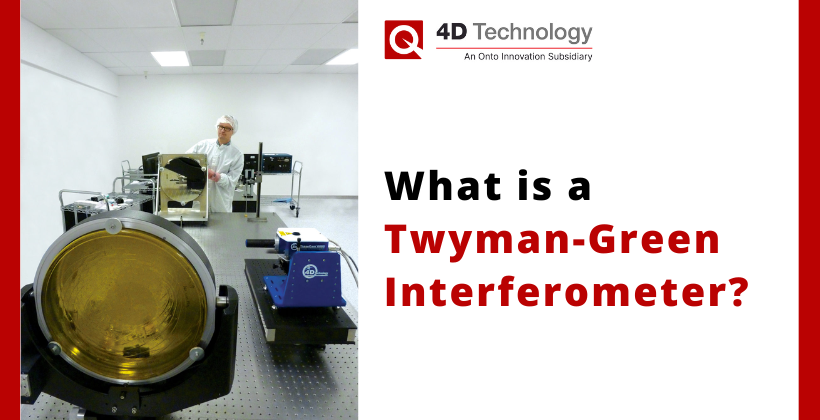

by 4D Technology Corporation
A Twyman-Green interferometer is a laser interferometer configuration used for measuring the surface shape and transmitted wavefront quality of optical components, assemblies, systems, and optical-grade mechanical surfaces.
In a Twyman-Green laser interferometer, a source beam is collimated, then divided by a beam splitter. The “reference beam” is directed to a high-quality reference mirror. The “test beam” is directed to the test surface. The test wavefront can be shaped to match the concave/convex curvature of the test surface or system by using a diverging lens or beam expander.


Twyman-Green Interferometers Measure Surface Shape
When the two reflected beams pass back through the beam splitter, they recombine, forming an interference pattern. This pattern is due to changes in phase caused by the differences between the test surface and “perfect” reference surface. The sensor records this interference pattern as a single acquisition frame.
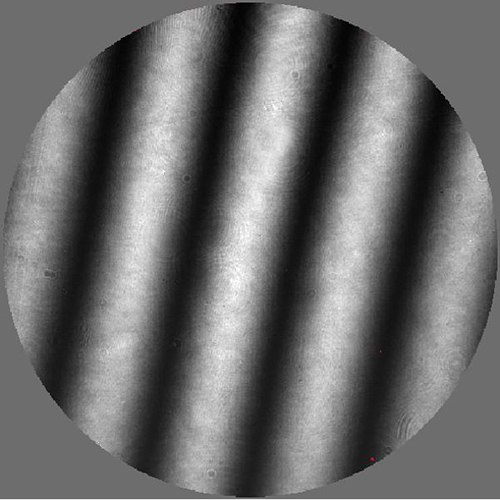

SEE 4D TECHNOLOGY’S TWYMAN-GREEN INTERFEROMETERS
Phase shifting interferometry combines several frames of data to measure the heights of all points on the test surface to accurately quantify the surface shape. Several methods are available to acquire multiple frames. The typical method introduces small, systematic phase shifts by moving the reference mirror between frames. This method can be described as a “frame rate” limited technique.
Dynamic Interferometry: Measure Despite Vibration
4D Technology’s Twyman-Green interferometers employ a different approach. These instruments use a polarisation-based Dynamic Interferometry® technique to collect four frames of data simultaneously. A quarter-wave plate is introduced into both the test and reference beams, imparting different polarisation states.


An element introduced before the camera separates the data into four phases which can be imaged simultaneously by the sensor.
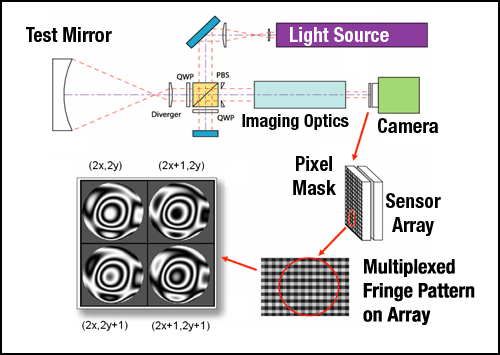

The advantage of the Dynamic Interferometry technique is that it is exposure limited. With Dynamic Interferometry, acquisition times are as short as a few microseconds. This incredibly quick acquisition freezes vibration and turbulence, producing excellent measurements even in noisy environments.
4D Technology pioneered the development of Dynamic Interferometry for single frame, quantitative phase measurement. READ MORE ABOUT DYNAMIC INTERFEROMETRY
Advantages of a Twyman-Green Interferometer
Twyman-Green interferometers have several key advantages over other types of interferometers.
Measure in Difficult Locations
The compact optical design makes for a small measurement head, which is easy to position in tight spaces. The laser source can be coupled to the head via a fiber optic cable, which moves heat-generating elements away from the optics. The combined result: easy positioning in challenging locations.
Measure Despite Vibration, Without Isolation
With a dynamic PhaseCam interferometer, vibration isolation is not required. This advantage is particularly critical when measuring large optics, or when measuring over long paths, where isolation systems would be prohibitively expensive. The interferometer does not even need to be coupled to the test optic, further simplifying setup. COMPARISON: INTERFEROMETERS VS SHACK-HARTMANN SENSORS
Measure Without an Expensive Reference
With a Fizeau interferometer, expensive, high quality reference transmission (flat or spherical) optics are required. The Twyman-Green interferometer does not require this external reference optic.
Operate Remotely
Motorised control of all functions means that a PhaseCam Twyman-Green can be operated remotely in measurement towers, vacuum chambers, environmental chambers and other challenging locations.
No Calibration Required
With no mechanical phase-shifting as in a temporal interferometers, fewer parts, and no delicate high-voltage PZT actuators, a Twyman-Green PhaseCam is always accurate.
High Resolution
The inherently on-axis design of the Twyman-Green interferometer means high resolution and accuracy is built into PhaseCams.
Measure Low Return Systems or Highly Reflective Surfaces
Polarisation control lets you match the energy in the test and reference beam to optimise fringe contrast. This feature lets you significantly improve the measurement noise floor and vertical resolution. A wide range of test setup reflectivities can be supported, and excellent contrast can be achieved, even in low return setups.


Applications for Dynamic Twyman-Green Interferometers
Twyman-Green interferometers are particularly well suited for measuring:
- large, concave optics
- slow f/# concave components
- focal optical systems
- aspheric optics
- low-return setups
- in environmental chambers and pressure vessels
- over long measurement paths
- in measurement towers or other hard-to-access locations
- inside polishing equipment for in situ process feedback
- moving systems, such as flexible membranes, adaptive optics, and actuating/spinning components.


Any questions?
QDUKI are the distributors for 4D Technology in the UK and Ireland. To talk about 4D Technology and Optical Metrology, please contact our Technical Sales Engineer, Dr. Luke Nicholls on (01372) 378822 or email him.



